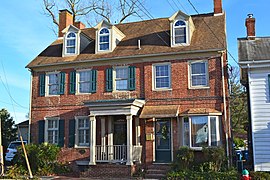
This is intended to be a complete list of properties and districts listed on the National Register of Historic Places in Orleans County, New York. The locations of National Register properties and districts may be seen in a map by clicking on "Map of all coordinates". Two listings, the New York State Barge Canal and the Cobblestone Historic District, are further designated a National Historic Landmark.

Broad Street – Davis Park Historic District is a historic district in the borough of Danielson, in the town of Killingly, Connecticut. The district is mainly residential in character, and includes Davis Park, a 1.9-acre (0.77 ha) triangular park created in 1890 and bounded by Main, Reynolds, and Broad Streets. The district as a whole is 30 acres (12 ha) in size. It includes examples of Stick/Eastlake, Queen Anne, and Colonial Revival architectural styles and was added to the National Register of Historic Places in 1998. It includes 95 contributing buildings, one contributing site, and four contributing objects.

The Tariffville Historic District is a 93 acres (38 ha) historic district in the town of Simsbury, Connecticut. It was listed on the National Register of Historic Places in 1993. It is part of the Tariffville section of Simsbury. The district includes 165 contributing buildings and two contributing sites. It also includes 26 non-contributing buildings and 4 non-contributing sites. There are several houses in the district of Gothic Revival style, probably following designs from pattern books of architect Andrew Jackson Downing. The Trinity Episcopal Church is the only building in the district designed by an architect of national standing, namely Henry C. Dudley. Many of the homes in the area were built by the Tariff Manufacturing Company, which opened a carpet mill along the Farmington River, and needed housing for workers.

The Newtown Borough Historic District is a 100-acre (40 ha) historic district in the borough of Newtown within the town of Newtown in Fairfield County, Connecticut. There is a local historic district, and an overlapping district that was listed on the National Register of Historic Places in 1996.

The Lakeville Historic District in Salisbury, Connecticut is a historic district that was listed on the National Register of Historic Places in 1996. It is also the name of a local historic district that was established in 1970. The local historic district is entirely included within the National Register-listed district.

The South Main and Washington Streets Historic District — 68-139 Washington St. and 2-24 South Main St. is a historic district in South Norwalk, Connecticut. The 110-acre (45 ha) district encompasses 35 buildings and two other structures. Varied architectural styles from the late 19th and early 20th centuries include Romanesque Revival, Second Empire, and Italianate architecture. Half of the area first became part of the National Register of Historic Places in 1977. The district was increased in 1985 with the addition of nine buildings on 2.5 acres (1.0 ha) and again in 1999, with another 10 buildings on 3 acres (1.2 ha), roughly along North Main Street from Washington Street to Ann Street.

The Woodbine Historic District in Woodbine, Georgia was listed on the National Register of Historic Places in May 1999.

The Silver City Historic District is a historically significant section of downtown Silver City, New Mexico, United States.
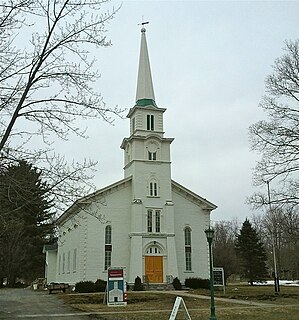
The Fabius Village Historic District in Fabius, New York is a 70-acre (280,000 m2) historic district that was listed on the National Register of Historic Places in 2000. It includes 57 contributing buildings, 2 contributing sites, 2 contributing structures, and 4 contributing objects.
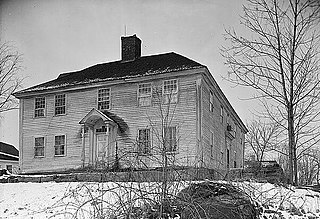
The North Stonington Village Historic District is a 105-acre (42 ha) historic district encompassing the historic center of the main village of North Stonington, Connecticut. The district includes a well-preserved small industrial village, which flourished in the years before the American Civil War, and declined afterward. The district was listed on the National Register of Historic Places in 1983.

The Haviland and Elizabeth Streets–Hanford Place Historic District is an irregularly shaped 4.3-acre (1.7 ha) historic district in Norwalk, Connecticut that was listed on the National Register of Historic Places in 1988.
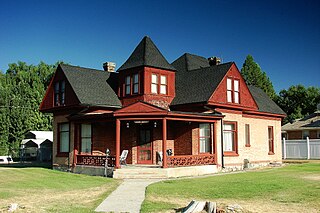
The Payson Historic District is a 300-acre (120 ha) historic district in Payson, Utah that was listed on the National Register of Historic Places in 2007.

Dover Green Historic District is a national historic district located at Dover, Kent County, Delaware. It encompasses 79 contributing buildings centered on The Green and including most of the inhabited part of 18th century Dover. Notable buildings include the Eagle Tavern, Kent County Court House (1875), Baptist Church-Dover Century Club (1852), King Dougall House and Store House, Parke-Ridgely House (1728), and a number of 19th century Italianate-style commercial buildings. Also located in the district are the separately listed Bradford-Loockerman House, Christ Church, and Old Statehouse.

The Frederica Historic District is a national historic district located at Frederica, Kent County, Delaware. It encompasses 118 contributing buildings in the town of Frederica. The oldest buildings date to the middle of the 18th century. The district includes a number of 18th and 19th century commercial and residential buildings in a variety of popular architectural styles including Greek Revival, Italianate, and Federal. Notable buildings include Trinity Methodist Church (1856), Robbins Hardware Store, the Hathorn House, Wootten Store, John Dill Store, Robert Dill House, firehouse, post office, and the Governor Hall House, the home of Delaware Governor John W. Hall (1817-1892).

The Main–Yankee Street Historic District is a historic district that encompasses an antebellum residential section of Gainesville, Sumter County, Alabama. The district was listed on the National Register of Historic Places on October 3, 1985. It covers 6.5 acres (2.6 ha) and contains five historically significant contributing properties, all predating the American Civil War.

The Summerfield District is a 56.2-acre (22.7 ha) historic district in Summerfield, Dallas County, Alabama. It is bounded by the Selma-Summerfield and Marion roads, and Centenary and College streets. Federal and Greek Revival are the primary architectural styles in the district. It contains 10 contributing properties and 6 noncontributing properties. The contributing properties are the Summerfield Methodist Church (1845), Summerfield Bank Building, school, Moore-Pinson-Tate-Hudson House (1840s), Sturdivant-Moore-Caine-Hodo House, Johnson-Chisolm-Reed House, unnamed residence, Bishop Andrew-Brady House, Swift-Moore-Cottingham House, and Childers-Tate-Crow House. The Summerfield District was added to the National Register of Historic Places on March 1, 1982.

City of Camden Historic District is a national historic district located at Camden, Kershaw County, South Carolina. The district encompasses 48 contributing buildings, 8 contributing sites, 2 contributing structures, and 3 contributing objects in Camden. The district is mostly residential but also include public buildings, a church, and a cemetery. Camden's architecture is classically inspired and includes examples of Federal, Greek Revival, and Classical Revival, in addition to cottage-type, Georgian, Charleston-type with modifications, and mansion-type houses. Several of the city's buildings were designed by architect Robert Mills. Notable buildings include the Kershaw County Courthouse (1826), U.S. Post Office, Camden Opera House and Clock Tower, Camden Powder Magazine, Trinity United Methodist Church, St. Mary's Catholic Church, Gov. Fletcher House, Greenleaf Villa, The First National Bank of Camden, and the separately listed Bethesda Presbyterian Church and Kendall Mill.
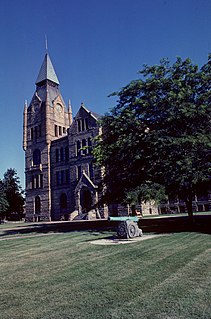
The Galesburg Historic District is a 496-acre (201 ha) historic district in Galesburg, Illinois. The district includes 1049 contributing buildings and contains the town's original plat as well as several older neighborhoods. The section of the district south of North Street encompasses Galesburg's historic city center and its most significant landmarks, such as the Knox County Courthouse, the Knox County Jail, the Burlington Depot, and Main Street's commercial buildings. Knox College, the school Galesburg was founded to serve, and its historic Old Main are also located in the southern half of the district. The area north of North Street is mainly residential and is dominated by Queen Anne and Classical Revival houses, including many transitional houses displaying elements of both styles.

The Oldwick Historic District is a historic district located in the village of Oldwick, an unincorporated community in Tewksbury Township in Hunterdon County, New Jersey. The district was added to the National Register of Historic Places on November 14, 1988. It includes 127 contributing buildings, 12 contributing structures, and one contributing site.
The Frankfort Commercial Historic District in Frankfort, Kentucky is a 24 acres (9.7 ha) historic district which was listed on the National Register of Historic Places in 1979. It included 86 contributing buildings and one contributing structure.



